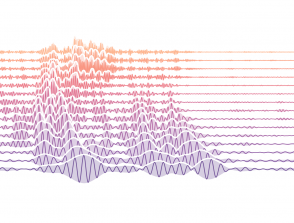Mechanical modelling of the source of glacial earthquakes in polar regions
Start: 01 October 2017
End: 07 June 2021
Supervisors :
Anne Mangeney, Olivier Castelnau, vladislav.yastrebov
Related teams :
Seismology
Status: Defended
Estimating the mass balance of the polar ice caps is a current challenge to
understand the rapid evolution of these ice masses under the effect of climate change.
The calving of icebergs represents a significant part of the mass loss of Greenland’s
glaciers. Their overturning near the terminus destabilises the glaciers.
Using a reference model in fluid dynamics, we quantified and characterised the
interaction between water and a capsizing iceberg, and validated and improved a
simplified iceberg overturning model. Then we built and validated a finite element
model that reproduces the response of a glacier to the contact force of a capsizing
iceberg at the terminus and that includes several rheologies of the glacier/rock
interface and an elasto-viscoplastic behaviour law of the ice. Using this comprehensive
model, we reproduced surface displacements and stresses at the base of the glacier and
analysed the influence of the parameters on the glacier response. We first modelled a
glacier with an idealised geometry. Then we modelled a real glacier, the Helheim
glacier, and for this we adjusted the model parameters using results from a reference
glacier flow model. A strong dependence of the amplitude of the surface
displacements on the Young’s modulus of the ice and the length of the floating tongue
is observed, but also a signature of the friction law parameters on these displacements.
The results obtained with the full model open interesting perspectives on the
estimation of the parameters of the rheology, geometry and basal friction laws through
comparison with field observations.






